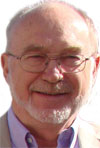
The Fukushima nuclear power plant accident occurred back in March 2011. Following that disaster, Japan ordered the close-down of all the nuclear generating plants in the country – there were 42 of them, previously providing a major part (over 30%) of the domestic electricity supply. Historically, Japan had used nuclear, coal and LNG power plants, and very little oil. The accident resulted in an enormous increase in imports of coal and LNG – the latter leading to an acceleration of LNG production in Australia and Africa, as well as the USA, over the last seven years.
For the future, Japan has had to review this decision, and slowly is allowing the restart of its nuclear power plants. This also helps in trying to meet the Japanese obligations under the Paris climate accord – to do this, nuclear energy needs to be used for around 20% of the nation’s power supply. Currently, nine more reactors in five power plants have been given the go-ahead to restart by their NRA, and eight more have received operating approval from local courts. All of these are required to operate under much stricter regulations, for example, relating to the evaluation of earthquake risks. Electric utilities have asked the Japanese NRA to certify a further 21 reactors, to come into service in the next 10 years. Each reactor restart will cut the demand for LNG by a million tons a year.
Part of the response planning over a possible accident is for Japan to stage major disaster scenarios, a sort of civil defence exercise. A nuclear disaster drill took place in August, mobilising 21 000 people in Fukui Prefecture: this assumed simultaneous major radiation release incidents at the Oi and Takahama nuclear power plants, both of which now have operational reactors. The drill involved residents and officials from the cabinet office, the Nuclear Regulation Authority and municipal governments. It focused on evacuating residents from Fukui and the surrounding prefectures. It also involved personnel aboard a maritime self-defence vessel, helicopters and land evacuations by buses. This exercise forms part of the conditions for the reopening of these nuclear generation plants.
Slow progress in Europe
In contrast to the activity in Japan, the construction of the new large size nuclear plants in Finland, France and the UK seem to make only slow progress. These could even be overtaken by the projects trying to bring forward the adoption of SMRs, particularly in Russia, US and maybe even in Britain. Actually, small-sized reactors have been working in Siberia for local supply systems since the 1970s, using the graphite moderated boiling water design. In China, several small reactors are in operation, with versions exported to India and Pakistan. Originally the term SMR was adopted by the International Atomic Energy Agency (IAEA), which defines ‘small’ as under 300 MW, and up to about 700 MW as ‘medium’ – which includes many of these current operational units. Together IAEA referred to them as ‘small and medium reactors’ (SMRs): but now the term is taken to mean ‘Small Modular Reactor’, and currently many of these are designed for around a 50 MW output. Multiple SMRs can be grouped on one facility.
In the USA, the NuScale Power design certification for their SMR project, to be adopted first by Utah Associated Municipal Power Systems, has been completed by the NRC. Utah AMPS is planning a 12-module SMR plant in Idaho, scheduled for operation by 2025, and forecasting an output cost of $65 per MWh, which is comparable with other renewable technology generation price forecasts. The market for SMRs is seen in brownfield sites – the sites of decommissioned (coal fired) power plants, where the power unit size averages 125 MW.
The UK has plans to add SMR plants, and the government even has (presumably) awarded the £44 million promised to support a ‘two-phase advanced modular reactor’ development, for which it received 20 bids earlier this year. NuScale has expressed strong interest, and Rolls-Royce is promoting its detailed design for a 220 MW SMR unit. Rolls-Royce has designed three generations of small to medium naval reactors since the 1950s.

In South Africa, two projects are known to have considered the use of modern HTR, high temperature gas cooled reactor designs, the PBMR (pebble bed modular reactor) project, led by Eskom (165 MW), and the HTMR (35 MW): the PBMR project is believed to be currently on hold. This type of reactor design is of major interest around the world, and October 2018 sees another of the biennial conferences on the topic in Warsaw, Poland.
Nick Denbow spent thirty years as a UK-based process instrumentation marketing manager, and then changed sides – becoming a freelance editor and starting Processingtalk.com. Avoiding retirement, he published the INSIDER automation newsletter for 5 years, and then acted as their European correspondent. He is now a freelance Automation and Control reporter and newsletter publisher, with a blog on www.nickdenbow.com
© Technews Publishing (Pty) Ltd | All Rights Reserved